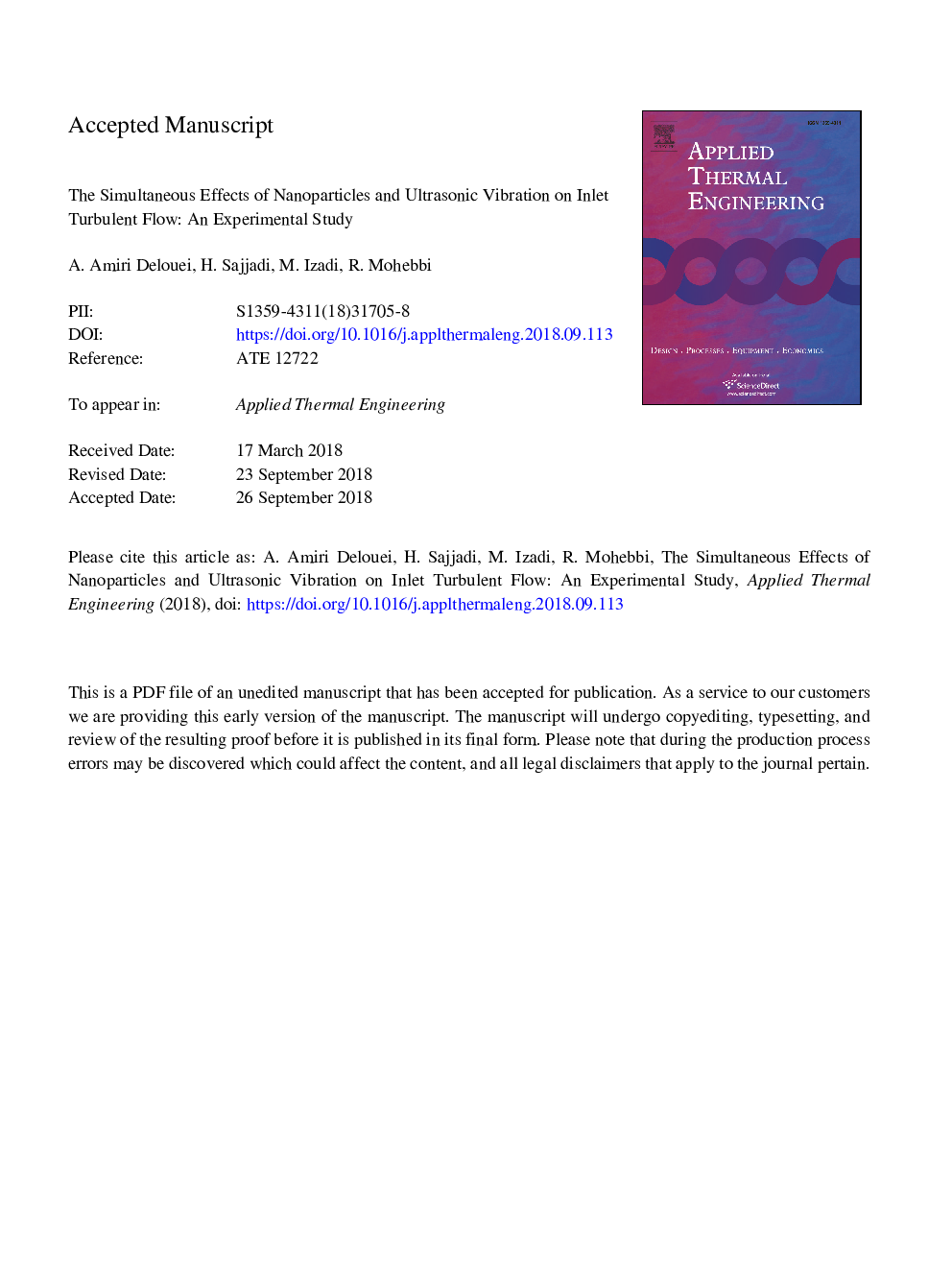| Article ID | Journal | Published Year | Pages | File Type |
|---|---|---|---|---|
| 11020822 | Applied Thermal Engineering | 2019 | 37 Pages |
Abstract
In the current study, the effects of the ultrasonic vibration and nanoparticles on the pressure drop and heat transfer enhancement of inlet turbulent flow are experimentally investigated. Two important factors in the design of heat exchangers, namely, heat transfer improvement and pressure drop, have been considered at different nanoparticle volume fractions, ultrasonic power levels, and flow rates. Existing experiential correlations are utilized to ensure the accuracy of the measurement instruments. It is observed that the effects of ultrasound vibration are more pronounced on the lower Reynolds number as well as the higher nanoparticle volume fraction. The result indicates that the ultrasonic vibrations could reduce the negative effect of pressure drop and improve the positive effect of heat transfer enhancement caused by nanoparticles up to 15.27% and 11.37%, respectively. The effect of ultrasonic power level variation is also bolder in more concentrated nanofluids and lower flow rates. The results of this work will be useful for designing future-oriented vibrating heat exchangers that also have the ability to work with nanofluid.
Related Topics
Physical Sciences and Engineering
Chemical Engineering
Fluid Flow and Transfer Processes
Authors
A. Amiri Delouei, H. Sajjadi, M. Izadi, R. Mohebbi,
